ISTORIJAT MUZEJA
Narodni muzej osnovan je ukazom ministra prosvete Jovana Sterije Popovića, 10. maja 1844. godine, kao Muzeum serbski, koji je na jednom mestu trebalo da sabere starine i da ih za potomstvo sačuva. Organizovan u prvim decenijama svog rada i kao ustanova zaštite i kao naučna, istraživačka ustanova, koja je konstituisala nacionalni identitet i bila presudan akter u razvoju zaštite baštine, Narodni muzej je ubrzo prerastao u zvaničnog reprezenta države i društva, svedočeći i o mogućoj snazi kulture i muzeja u Srbiji.
Intenzivnoj delatnost prikupljanja i razvoja zbirki, pridružen je ubrzo i raznovrstan istraživački rad, koji je preobrazio Muzej od skladišta prošlosti u prikazivački, demonstracioni izložbeni prostor. Međuratne godine dvadesetog veka dovele su do velike transformacije, u kojoj su izložbe, posebno međunarodne koje su se dinamično smenjivale, uz raznovrsnu istraživačku i izuzetnu izdavačku delatnost, postavile Muzej kao centar informacija o izuzetnom, o lepom, o posebnim vrednostima nacionalne, ali i evropske kulturne baštine.
Poslednjih decenija, bogata izložbena i izdavačka delatnost, kao i raznovrsni programi za publiku, u kojima nove tehnologije imaju posebno mesto, potvrdili su da je Narodni muzej važan centar komunikacije i izvor saznanja, otvoren, dinamičan i pristupačan muzej.
ARHEOLOŠKI MUZEJ ĐERDAPA
Arheološki muzej Đerdapa u Kladovu predstavlja značajna svedočanstva o raznorodnim kulturama praistorijskog, rimskog i srednjovekovnog perioda na Dunavu. Osnovan je s ciljem integralne zaštite arheološke baštine Dunava u oblasti šire regije Gvozdena Vrata – Đerdap i celovitog predstavljanja i promocije ovog značajnog nasleđa. Jedan je od retkih specijalizovanih muzeja u Srbiji, jedan od dva arheološka muzeja. Otvoren je 1996. godine u objektu namenski građenom za muzej, po čemu se takođe izdvaja od ostalih muzeja u Srbiji.
Konstituisanje Arheološkog muzeja Đerdapa kao specijalizovanog muzeja ove regije, predstavlja jedan od najznačajnijih realizovanih ciljeva Naučno-istraživačkog projekta Đerdap. Intenzivnim arheološkim istraživanjima, koja su u dve faze sprovođena tokom poslednjih decenija 20. veka na potezu dunavske obale od Velikog Gradišta do Sipa, (Đerdap I, 1964–1971), te od Karataša do Prahova (Đerdap II, 1978–1990), konstatovani su mnogi, višeslojni lokaliteti, naselja i nekropole, utvrđenja, kule stražare, putevi, javni spomenici, opredeljeni u preistorijsku, rimsku ili srednjovekovnu epohu. Istraživanja su sprovedena s ciljem spasavanja nasleđa ugroženog formiranjem akumulacionih jezera za potrebe dve hidroelektrane, HE Đerdap I, kod Kladova (Karataš) i Prahovo, HE Đerdap II (Kusjak). Istraživanja su u manjem obimu nastavljena do danas, posebno na utvrđenju Dijana (1978–2012).
Zahvaljujući ovim otkrićima, na svetlost dana su izašli do tada nepoznati, skriveni predeli, koji su nastajali i nestajali milenijumima.
Postavka Arheološkog muzeja Đerdapa prezentuje praistorijske, rimske, kasnorimske, ranovizantijske ili srednjovekovne nalaze, u hronološkom rasponu od preko 10.000 godina. Veliki broj izloženih predmeta predstavlja istinske raritete, baštinu koja po važnosti prelazi granice naše zemlje.
Trenutno je u galerijama Muzeja izloženo preko 1.500 prvorazrednih eksponata Zbirke Đerdap, otkrivenih na više od 100 lokacija ove regije. Svi predstavljaju različita dostignuća prošlih kultura, predmete iz svakodnevnog života praistorijskih zemljoradnika, običaje i verovanja kultura kamenih i metalnih doba, oruđa kojim su ljudi nekada pripitomljavali svoj svet, nakit i ukrase za odeću kojima su potvrđivali svoj status.
Najbrojniji su predmeti rimske epohe, koji svedoče o rimskom osvajanju ove teritorije, uspostavljanju vlasti u ovoj, i tada, pograničnoj zoni, prihvatanju rimskog načina života: delovi rimske vojne opreme, natpisi povodom izgradnje javnih objekata, neki izloženi u lapidarijumu ispred Muzeja, arhitektonski elementi luksuznih rimskih građevina, predstave mnogobrojnih bogova rimskog Panteona, zavetni natpisi, mermerni portreti, metalne, staklene i keramičke posude, svetiljke i luksuzni nakit. Pokazatelj su kontakata i veza ove regije u rimsko doba, značaja koje je ova zona imala u okvirima Carstva, kao i transformacija koje su se desile u kasnorimsko vreme, naseljavanja novih plemena i promena koje su označile početak srednjovekovnog doba.
Ova epoha predstavljena je mahom nalazima sa nekropola, najviše istraženim, a srednjovekovni nakit otkriven u njima omogućava prepoznavanje osobenosti različitih zajednica. Postavka je dopunjena dokumentarnom građom koja predstavlja izgled i istraživanje jednog broja sačuvanih, kao i potopljenih i nestalih lokaliteta šire oblasti Đerdapa.
Na teritoriji Arheološkog muzeja Đerdapa sačuvani su segmenti reperezentativne spomeničke celine limesa Rimske imperije, utvrđene rimske granice, koji čine jedinstven arheološki park regije. Tabula Traiana, natpis postavljen na stene kanjona Donje Klisure – Kazana, vidljiv samo s Dunava, jedno je od najznačajnijih svedočanstava o Trajanovim građevinskim aktivnostima na Dunavu i pripremama za rat sa Dačanima.
Ostaci Trajanovog puta – Trajanov kanal (Sipski kanal) i čuveni Trajanov most na Pontesu, kod Kostolca, kojeg je izgradio Apolodor početkom 2. veka naše ere, zajedno s tvrđavom Pontes (1–6. vek), koja je štitila ovaj most, predstavljaju izuzetan pimer rimske arhitekture.
O značaju ovog dela Rimskog carstva svedoči i utvrđenje Dijana (Statio Cataractarum Diana), stanica na (dunavskim) kataraktama, važan augzilijarni logor od 1. do 6. veka, jedan od najvećih u sklopu limesa. Dijana je bila okružena velikim naseljem, nekropolama, pristaništem. Ranovizantijski izvori pominju ovo naselje kao gradić Zanes.
Osim rimskih ostataka, od potapanja je sačuvana na samom ulazu u Kladovo i srednjovekovna tvrđava-grad, Fetislam.
Postavka Arheološkog muzeja Đerdapa i sačuvane spomeničke celine omogućavaju da se sveobuhvatnije sagleda jedinstven kulturni predeo Dunava u ovoj regiji, koji se formirao i menjao u kontinuitetu sada već preko deset milenijuma. Reči Plinija Mlađeg (63. n.e. – oko 113. n.e), rimskog senatora u vreme careva Domicijana, Nerve i Trajana, prijatelja čuvenog rimskog istoričara Tacita, zapisane pre gotovo 2000 godina (Plin., Ep. XVI 2) – Veličanstveno je stajati na obali Dunava (Magnum est stare in Danubii ripa), dobijaju pravi smisao u susretu sa Đerdapom.
fonte: @edisonmariotti #edisonmariotti
Kustos Zbirke Đerdap i upravnik Arheološkog muzeja Đerdapa: Jelena Kondić
muzejdjerdapa@narodnimuzej.rs
http://virtuelnimuzejdunava.rs/srbija/informacije/narodni-muzej-u-beogradu—arheoloski-muzej-djerdapa.13.html
http://virtuelnimuzejdunava.rs/srbija/informacije/narodni-muzej-u-beogradu—arheoloski-muzej-djerdapa.13.html
--inHISTORY MUSEUM
The National Museum was established by the decree of the Minister of Education JS Popovic, 10 May 1844, as the Museum serbski, who was at one point supposed to collect antiques and preserve them for posterity. Established in the early decades of its work and as an institution of protection and as a scientific and research institution, which has constituted a national identity and a crucial player in the development of heritage protection, National Museum soon outgrew the official representative of the state and society, testifying about the possible effect of culture and museums in Serbia.
Intense activity of collecting and developing collections, associated with quickly and varied research work, which has transformed the Museum of the warehouses of the past for display, demonstration showroom. Interwar years of the twentieth century led to a major transformation, in which the exhibition, especially the international that are dynamically alternated, with a diverse research and exceptional publishing, set Museum as a center of information on exceptional, the beautiful, the special national values, as well as European cultural heritage.
In recent decades, the rich exhibition and publishing, as well as various programs for the public, in which new technologies have a special place, confirmed that the National Museum is an important center of communication and source of information, open, dynamic and accessible museum.
Archaeological Museum of Đerdap
Archaeological Museum of Djerdap
Archaeological Museum of Djerdap with the museum park - lapidarium
The museum's setting, the Archaeological Museum of Djerdap
The museum's setting, the Archaeological Museum of Djerdap
The remains of the fortress Diana
Archaeological excavations at Diana
Archaeological Museum of Djerdap in Kladovo represents a significant testimony to diverse cultures of prehistoric, Roman and medieval periods on the Danube. It was founded with the goal of integral protection of the archaeological heritage of the Danube in the area of the wider region of the Iron Gate - Iron Gate and comprehensive presentation and promotion of this important heritage. One of the few specialized museums in Serbia, one of the Archaeological Museum. Opened in 1996 in the house purposely built for the museum, making it also stands out from other museums in Serbia.
The constitution of the Archaeological Museum of Djerdap as specialized museums of the region, is one of the most significant achieved goals Scientific research project Djerdap. Intensive archaeological excavations, which are conducted in two phases during the last decades of the 20th century on the stretch of the Danube coast of Veliko Gradiste to Sipa, (Djerdap I, 1964-1971), and of Karatas to Prahova (Djerdap II, 1978-1990), the recognized many, multi-layered sites, settlements and necropolis, forts, watchtowers, roads, public monuments, set in prehistoric, Roman and medieval epoch. The study was conducted with the aim of saving endangered heritage formation of artificial lakes for the purpose of two hydroelectric power plants Djerdap I, near Kladovo (Karatas) and Prahovo, Djerdap II (Kusjak). Studies have continued on a smaller scale to date, especially on the fort Diana (1978-2012).
Thanks to these discoveries, to light went out until then unknown, hidden compartments that have emerged and disappeared for millennia.
The setting of the Archaeological Museum of Djerdap presents prehistoric, Roman, late Roman, early Byzantine or medieval are, in chronological span of over 10,000 years. A large number of exhibits represent true rarities, most important legacy that crosses the boundaries of our country.
Currently, in the galleries of the Museum is exposed more than 1,500 first-class exhibits Collections Djerdap, discovered at more than 100 locations in the region. All are distinct achievements of past cultures, everyday objects of prehistoric farmers, customs and beliefs of the culture of stone and metal age, the tools that people used to domesticate their own world, jewelry and ornaments for clothing which confirmed his status.
The majority of cases of the Roman era, which testify to the Roman conquest of these territories, the establishment of government in this, and then, the border zone, the acceptance of the Roman way of life: the parts of the Roman military equipment, signs over the construction of public buildings, some on display in the Lapidarium in front of the museum, architectural elements luxurious Roman buildings, shows the many gods of the Roman pantheon, votive inscriptions, marble portraits, metal, glass and ceramic vessels, lamps and luxurious jewelry. Indicator of the contacts and connections of the region in Roman times, the importance of this zone was within the limits of the Empire, as well as the transformation that occurred in the late Roman time, the settlement of new tribes and the changes that have marked the beginning of the medieval era.
This epoch is represented mainly finds from the necropolis, the most researched and medieval jewelry discovered in them to recognize the characteristics of different communities. The setting is complemented by documentary material that represents the look and explore a number of preserved, as well as submerged sites and missing the wider area of the Iron Gate.
On the territory of the Archaeological Museum of Djerdap preserved segments reperezentativne monumental continent limes of the Roman Empire, the Roman established boundaries, which make unique archaeological park in the region. Tabula Traiana, the inscription placed on the walls of the canyon Lower Gorge - Kazan, visible only from the Danube, is one of the most important testimonies of Trajan construction activities on the Danube and the preparations for war with the Dacians.
The remains of Trajan's times - Trajan channel (Sip Channel) and the famous Trajan's Bridge to Pontes, near Kostolac, built by Apolodor early 2nd century AD, together with fortress Pontes (1-6. Century), which has protected the bridge, represent Pimero remarkable Roman architecture.
The importance of this part of the Roman Empire, testified by the finding of Diana (Statio Cataractarum Diana), the cells (Danube) cataracts, important augzilijarni camp from the 1st to the 6th century, one of the largest within the limit. Diana was surrounded by a large settlement, the cemeteries, pier. Early Byzantine sources mention this village as a small town of Zanes.
Besides the Roman remains of the sinking is preserved at the entrance to Kladovo and the medieval fortress-city, Fetislam.
The setting of the Archaeological Museum of Djerdap and preserved monuments entity allow more comprehensive view of the unique cultural landscape of the Danube in this region, which is formed and changed continuously now for over ten millennia. The words of Pliny the Younger (63 not - around 113 AD), the Roman senator at the time of the emperors Domitian, Trajan and Nerve, a friend of the famous Roman historian Tacitus, written nearly 2,000 years ago (Gas., Ep. XVI 2) - Magnificent to Be on bank of the Danube (Magnum six old and Danubio RIPA), get a real sense in the face of Djerdap.



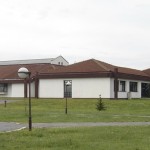
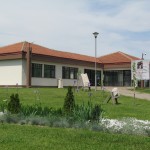
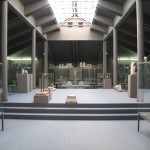
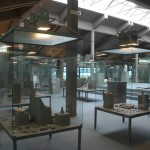
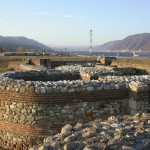
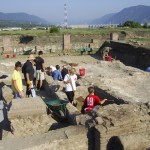
Nenhum comentário:
Postar um comentário